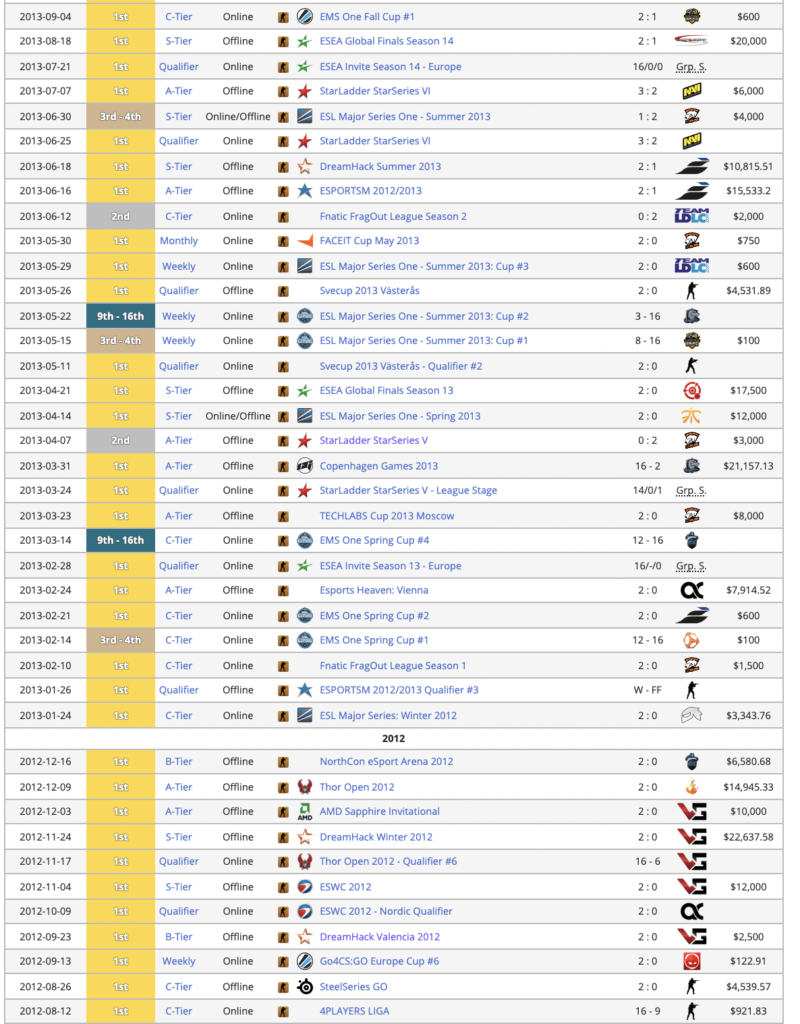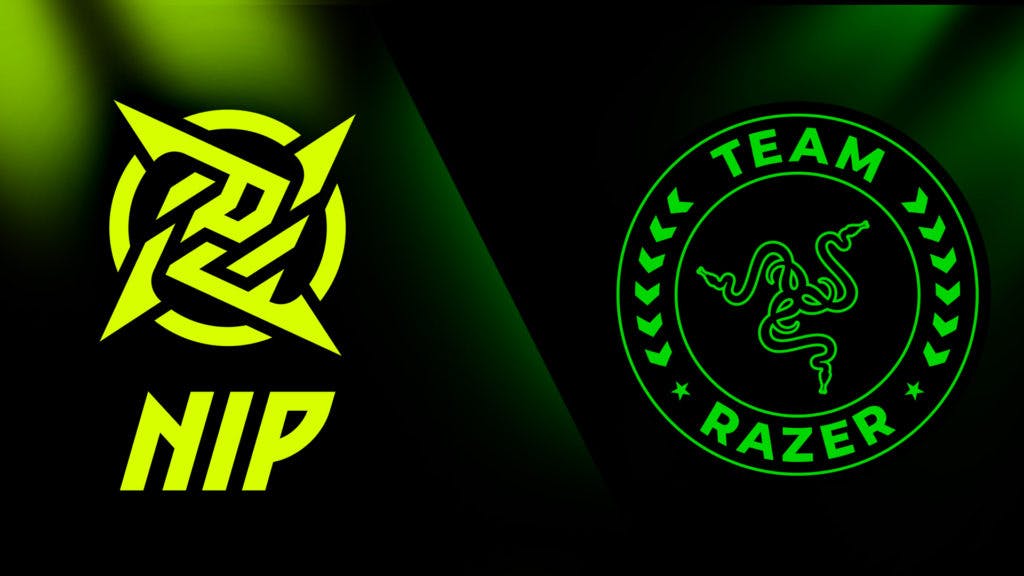20 years after its inception, Ninjas in Pyjamas (NiP) is still going strong. In honour of their new Razer sponsorship, we revisit the org’s history from humble beginnings to international glory. (Image Credit: ESL / Kelly Kline)
In the world of esports few names strike fear into opponents as much as Ninjas in Pyjamas. Despite the comedic image it conjures in your mind, the Swedish organization has become one of the largest and most successful outfits in the entire esports industry, boasting top teams in a number of games, a long history of major event wins and multiple world championship wins.
As far as prestigious organizations in esports go, they don’t get much bigger than NiP. With Ninjas in Pyjamas announcing a multi-year deal with Razer, we wind back the clocks to see how it all began.
The early days
The organization was founded way back in June 2000, well before the esports industry was the global behemoth we know it as today. Tommy "Potti" Ingemarsson and Christoffer "Tootzi" Olsson were the two founding players of the original NiP, which started off life as a Counter-Strike team that had no sponsorships or plans to become a major international company. It was simply a group of good CS players who wanted to compete.
Just over a year later, the NiP CS team managed to win CPL Winter Championship, taking home a massive $50,000 first prize, which was one of the largest in esports at the time. They would go on to win a couple of other smaller events just after this, but this success was the last that the NiP name would have for some time, as soon the core of the NiP roster would be signed by SK Gaming, and the organization would lay dormant for a few years.

The first return
The Ninjas would return at the start of 2005, when the SK Gaming Counter-Strike team, which still included many of the original members of NiP, decided to let their contracts expire and try to secure sponsorship on their own. At this point, the Ninjas in Pyjamas company was founded by Ingemarsson, Emil “HeatoN” Christensen, Peter Hedlund and Victor Lindqvist, with the CS team hoping to make the organization viable by producing top results as they had at SK.
The plan worked for a while, and it was during this period in NiP’s history where many legendary names such as HeatoN, Oskar "ins" Holm, Abdisamad "SpawN" Mohamed, Robert "RobbaN" Dahlström and briefly Christopher "GeT_RiGhT" Alesund were a part of the roster. But by the end of 2007 the Ninjas had disappeared again, leaving the esports scene and once again going inactive.

The start of a NiP legacy
The NiP that we all know and love today got its start in August 2012, when the organisation was reborn and announced that it had signed the now-famous roster of GeT_RiGhT, Richard "Xizt" Landström, Patrik "f0rest" Lindberg, Adam "friberg" Friberg and Robin "Fifflaren" Johansson to compete in the new game Counter-Strike Global Offensive. With the esports industry really starting to take off and CS:GO just starting out as an esport it was the perfect time for the organization to return, and with the iconic name and some familiar faces at the helm, they had a lot of fans instantly.
But what really cemented the NiP name as legendary in the CS:GO scene was the performance of this roster. Mere weeks after being announced as the new NiP squad the team won DreamHack Valencia 2012, kicking off the start of one of the most impressive win streaks in all of esports. Over the next few months, NiP would go undefeated on LAN, boasting a ridiculous 87-0 map win record before finally falling to Virtus.Pro at StarLadder StarSeries V.
This was just a mere blip for the legendary roster, however, with the players quickly regrouping and winning even more tournaments over the coming months. A quick look at their Liquipedia page shows just how impressive they were during this time, and no other team has even come close to doing this well in CS:GO.

The Major era
As the CS:GO scene started to grow the first Valve sponsored Major was announced in the shape of DreamHack Winter 2013, and NiP entered as one of the favourites to take home the massive $100,000 first prize. While they had lost some events in the months prior to the event, many still expected them to easily beat the competition, after all, they were the best LAN team in the world at a time where a lot of CS was still played online. But it was unfortunately not to be, as NiP would fall 2-1 to Fnatic in the grand final, which really kickstarted an iconic rivalry between the two rosters.
Over the next few months NiP continued to be a top team, not placing outside the top three, in any event, they played between the two initial Majors. But now the competition was getting tougher, as more teams started to really push them to their limits. Once again NiP would make the final of the next Major, ESL Major Series One Katowice 2014, but would fall short, this time losing 2-0 to Virtus.Pro.
By the time the next Major rolled around it was really make or break time for NiP. The team had been one of the best in the world for years at this point, but had never managed to win a Major and effectively become the world champions.
ESL One Cologne 2014 was one of the most important events in NiP history, and the team did not disappoint. They gave fans some worrying moments, losing to Epsilon Esports in the group stage and dropping one map in every playoff match, but would eventually win the event taking down rivals Fnatic 2-1 in the final to officially become Major winners.

The transition
But the performance wasn’t entirely convincing, and soon after the first roster change was made with Fifflaren being replaced by Mikail "Maikelele" Bill. This spelt the end of the iconic NiP roster that dominated the game and really made NiP an iconic esports organisation. But it wasn’t the end of the organisation’s success in CS:GO. Despite a slow start the new roster started to return to form at the end of 2014, and again returned to a Major final losing to LDLC at DreamHack Winter 2014.
Unfortunately, this roster again didn’t work out, with Aleksi "allu" Jalli joining the team in early 2015. Just like with Maikelele the team looked good, and once again managed to make it to a Major final, this time falling 2-1 to Fnatic at ESL One Katowice 2015. But this would be NiP’s last Major final appearance, and a difficult period was ahead.
By the end of the year, allu was gone and this would be a common theme of the years to come, with many players being brought in for short periods of time before being replaced. Eventually, the core four players of the iconic roster would also move on, and for a few years, NiP dropped to be a mid-level team, not quite reaching the very top of the CS:GO scene they had once dominated. There were still a lot of event wins during this time, but for an organization that was used to winning more events than they lost it was a difficult transition.

The NiP of today, a diverse organisation
These days NiP’s CS:GO roster continues to be up there with the best in the world, and certainly capable of winning any event they attend. But the organization has also expanded, signing rosters across many other games since returning in 2012. Arguably the most successful has been its Brazilian Rainbow Six team, who managed to become world champions at the Six Invitational 2021.
After starting out life, multiple times it should be said, as an upstart Counter-Strike team, Ninjas in Pyjamas is now one of the biggest and most successful esports organisations in the world, with fans across the globe and many of the best players ever seen in esports.

The future looks bright for the organisation as a whole, but even if it were to disappear right now, it would always be remembered as one of the best organizations to have ever existed in esports, and many of the records set by the iconic CS:GO roster will likely never be broken.